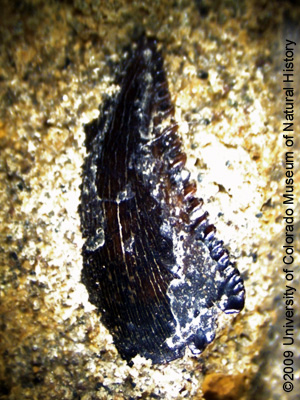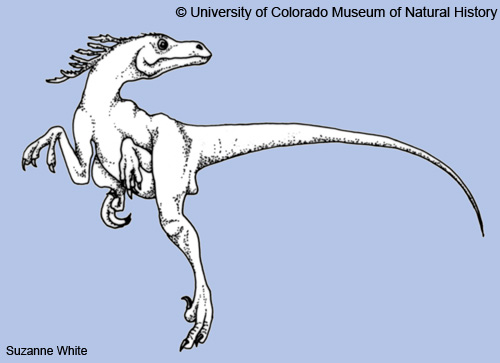

This fossil tooth, still in its matrix of rock, is similar to some collected by harvester ants. Saurornitholestes langstoni was a small feathered dinosaur belonging to the dromaesaurid family, which includes the well-known Velociraptor. Saurornitholestes ("lizard-bird thief") fossils are commonly found in Alberta, Canada. It had a curving blade-like claw on the second toe, and was long-legged and lightly built, with large teeth in the front of the jaws like Velociraptor. It probably scavenged as well as hunted small animals.
Scientists currently think that dromaesaurs like Saurornitholestes were some of the closest relatives of early birds.

The Lance Formation has produced many important fossils, ranging from tiny microfossils like those collected by harvester ants to fully articulated dinosaur skeletons. It was deposited by streams on a coastal plain stretching along the shallow interior sea of the Western Interior Seaway, which cut North America in half. Dinosaurs, reptiles, fish, amphibians, birds, and small mammals lived in a wet subtropical climate very different from today's dry seasonal climate.
Find out more about dromaesaurs at the University of California Museum of Paleontology's The Dromaeosauridae: The "raptors".
Learn more about the Lance Formation with Passport-In-Time Microvertebrate Fossil Project at the University of Wyoming Geological Museum: Late Cretaceous Paleontological Resources in the Public Eye.